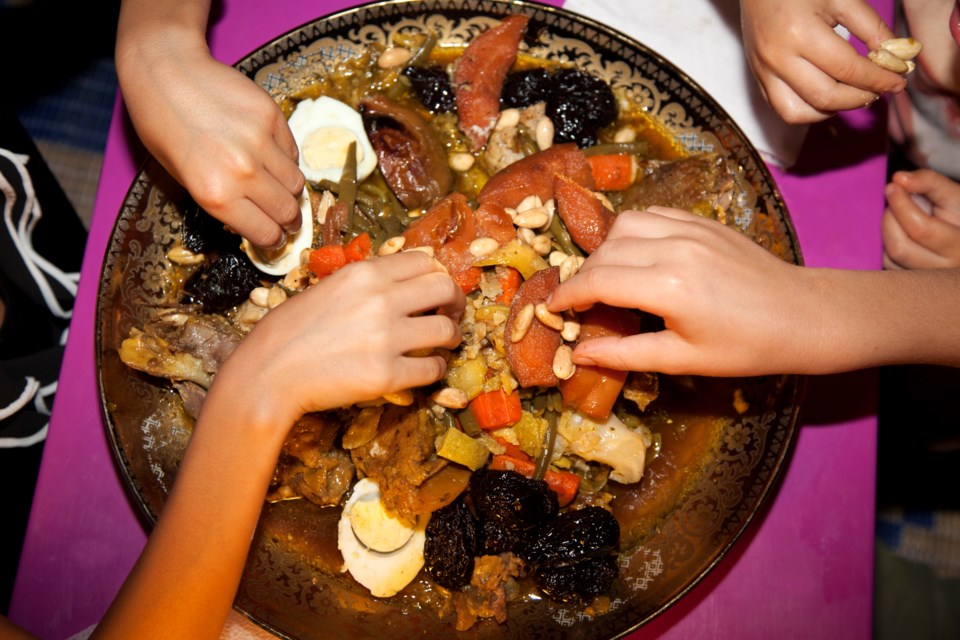With the dark clouds of war and all its suffering blanketing Israel and Gaza, and now threatening to spill beyond, the piling on of even more uncertainty and trepidation to these already uneasy times can make it tough to find even a small speck of hope.
But reaching out to each other with open hands, not clenched fists, is exactly what we need right now. So I was somewhat soothed—relieved, really—to learn of various initiatives across Canada doing just that. Reaching out.
In Vancouver, members of Jewish and Muslim communities alike have been calling for peace and praying for civilians. Civic leaders met members of Al Masjid Al Jamia, also known as the Travellers’ Mosque for the way it embraces both Muslims and non-Muslims. They talked, they listened, and they prayed for de-escalation and sent compassionate messages of peace and love to the civilians of Israel and Gaza.
Like so many people, members of mosques and synagogues and other communities across B.C., religious and otherwise, have been expressing their understanding of the pain and anger on both sides of the conflict, and urging an end to the seemingly endless cycle of violence and dehumanization of Palestinians and Israelis alike. Seek dialogue and peace, and stop targeting civilians with violence is what people want to see from the leaders of Hamas and Israel.
Similar scenes are unfolding across Saskatchewan, Manitoba—all of Canada. Some initiatives have been going on for years, pushed forward by people like Raja Khouri—an extraordinary champion of human rights (he’s an active member of the Canada committee of Human Rights Watch and longtime human rights commissioner in Ontario); the founding president and CEO of the Canadian Arab Institute; and co-founder of the Canadian Arab Jewish Leadership Dialogue Group. He, along with Jeffrey Wilkinson, an educator and Jewish American who lives in Canada and works with communities on building dialogue and solutions, have been working together for years to bridge divisions between Palestinian and Jewish communities in Canada and cultural and ideological divides of all sorts.
Coincidentally, just weeks before this latest war erupted, they jointly published a book about their efforts—one not yet available in public libraries, but one you can urge your favourite library to buy for shared reading if it sounds like a good resource to you.
The title alone is pretty interesting and provocative—The Wall Between: What Jews and Palestinians Don’t Want to Know About Each Other. Good chance it will make for some equally interesting and provocative reading, and subsequent conversations.
While you make your way toward your own understanding and reasoning around this conflict, here’s some more food for thought.
It’s a pretty sure bet that making a simple “multicultural” meal with universal components from a cross-section of seemingly conflicting cultures, can open up at least some light and air. Especially if you invite people to share it you normally might not otherwise. Even better—make it a potluck and try to include at least some dishes equally popular in many regions, in this case the Middle East. You can, for instance, enjoy halva in Damascus, or Gaza City, or Tel Aviv—even India and the Balkans, or just about anywhere around the world, Likewise, one of my favourites—houmous.
If you try the recipe below, maybe take a minute while you’re mixing it up to consider the people suffering in the Israel-Hamas war, especially Gaza, one of the most densely populated bits of land in the world—more crowded than Manhattan, and no high-rise buildings, with 2.3 million people, half of them kids, jammed into 365 sq. km. While it’s been blockaded for 16 years, the current “complete siege” means it’s been totally cut off from fresh water, supplies, fuel and electricity, now pushing 10 days as I write.
The International Red Cross / Red Crescent Society and World Food Programme are two of the many humanitarian agencies that would welcome any kind of donation towards their overwhelmed efforts.
ONE GREAT DISH. MANY, MANY STORIES
Depending who you ask, you could end up scratching your head, like I’ve done more than once, over where the heck houmous, hommus, hommos, hoummos or hummus comes from, never mind the proper spelling. (All the above are accepted, but I stick with the spelling at Orestes, the infamous Greek restaurant I worked at on Broadway in Vancouver to put myself through journalism school). I’ve found it in Jewish restaurants (“Oh yes, it’s definitely Jewish,” one Jewish chef told the BBC), Palestinian places, Persian and Turkish delis, and good ol’ Canadian grocery stores. Some say the first written reference to it was in Egypt (a 13th-century cookbook); others, the Hebrew bible. Some claim it’s from Syria, or maybe even Southwest Asia, where the first chickpeas were cultivated. Regardless, you can enjoy it simply scooped up with pita or lavash bread made in so many different cultures you can’t count them all—or however you care to eat it.
HOUMOUS AMONG US
Here's my favourite houmous recipe after testing many, from Carol Gelles' 1,000 Vegetarian Recipes with a couple of adjustments:
1 1/2 c. cooked or canned chickpeas, drained
3 tbsp. tahini
2 tbsp. fresh lemon juice
3 tbsp. olive oil
2 cloves garlic, minced
1/4 tp. ground cumin
1/8 tsp salt or to taste
Whir it all up in a blender until you've got the texture you like. Or, if you don't have a blender, just mash it all up with a potato masher. Great for snacks or a whole meal (add some sliced cuke or tomato), it's so tasty and satisfying.
Glenda Bartosh is an award-winning journalist whose kitchen shelves look like something from the United Nations.




